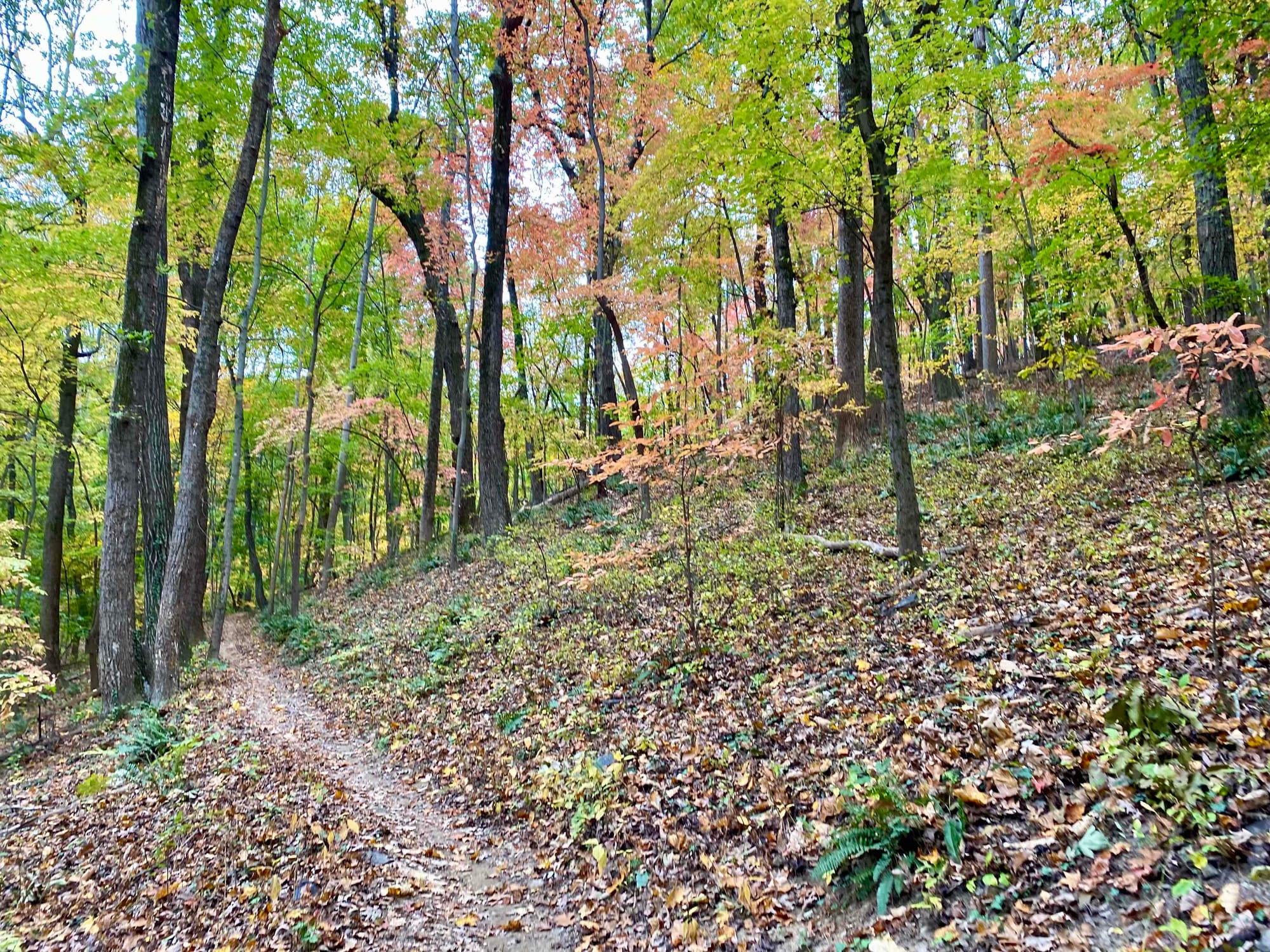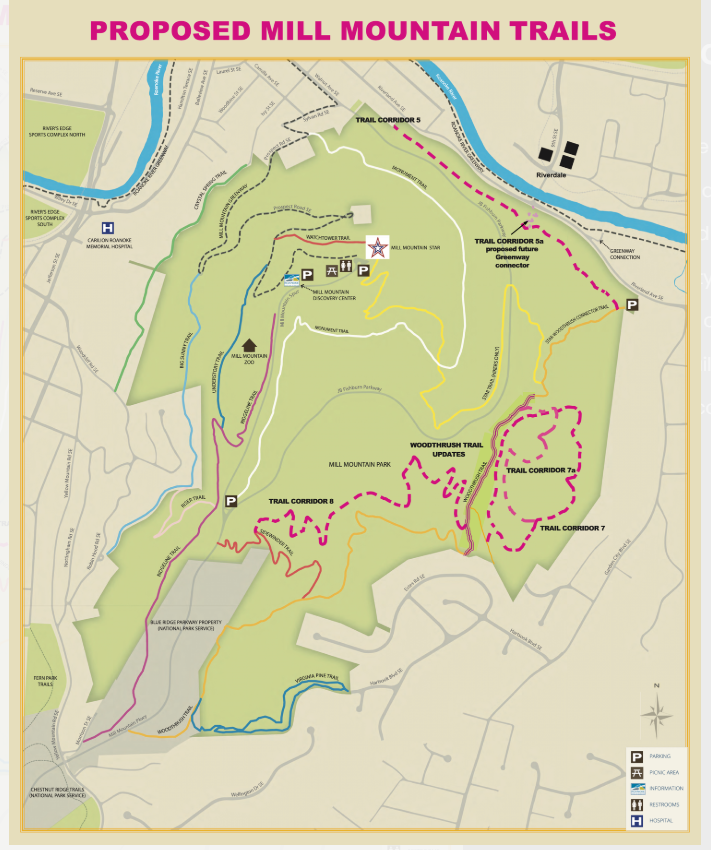Mill Mountain Trails To Expand Significantly with First Professional Build, Plans Show
Four miles of new pathways are planned to get underway this spring on Mill Mountain, which has at least 10 miles of trails.

Crews plan to significantly expand the trail system on Mill Mountain this spring, adding four miles of new pathways for hiking, running, biking or any non-motorized use.
The mountain has at least 10 miles of trail, but has room for more — just not enough volunteers to build them. For this project, the nonprofit Roanoke Parks Foundation found a route that’s faster, raising hundreds of thousands of dollars to bring in two paid, full-time crews of three people each aided by an excavator.
They plan to start work in March and finish by early summer, according to an official with the foundation, which has a project budget of $350,000.
“This is the first time that I'm aware of that the city of Roanoke is contracting with a professional trail building company from outside the region, coming in to rapidly accelerate the delivery of these trails,” said foundation president Andy Gill.
Such work has previously been done by volunteers, who deserve thanks for creating “miles and miles of trails over decades,” Gill said. “What's exciting about this project is that we're going to get these four miles of trail built in probably about a four-month time frame.”
A city official confirmed the first.
“This is a bit of a different animal! Typically, our staff work with groups of dedicated volunteers to hand build trail piece by piece,” said Katie Slusher, park projects manager, by email.
The contractor, Black Diamond Designs of China Grove, North Carolina, last week furnished the city with maps, trailbuilding methods and a stormwater pollution-prevention plan in a filing that spans 250 pages. The city had yet to issue a final decision on the company’s request to proceed, which was still under review.
Those on foot, or on horseback, can use the new trails, along with newbie bikers. Although the new segments will challenge seasoned mountain cyclists, there will also be an easy section for getting beginning mountain bikers up to speed with downhill cycling that is the first of its kind on the mountain. Signs will mark the new mileage green (beginner), blue (intermediate) and black (advanced).

“One of our biggest priorities was to open the mountain up to users who have a wider range of fitness and experience,” Gill said.
The existing Mill Mountain trail plan will guide the work, as will trail-building principles and practices recommended by the International Mountain Bicycling Association and federal Department of Interior, the filing said. The process will require making bench cuts using a “micro” excavator, followed by compaction of the soil, to yield a single-track, dirt path about three to four feet wide and slanted to shed water, the filing said.
And rather than dig up a large area and come back and set the trail, “each crew will only excavate the amount of bench that can be finished in one day” and thereby avoid leaving uncompacted soil, stockpiles or loose material vulnerable to erosion, the filing said.
The work will disturb and remove trees from nearly three acres of ground. Crews must receive special permission to remove trees more than three inches in diameter and consult wildlife officials about any trees that look like habitat for the northern long ear and tri-colored bat, the filing said.
The spot picked out for the project is to the left of the highway on the mountainside, the J.P. Fishburn Parkway, for a driver going up. No part of the new trail will reach the mountaintop, hub of 568-acre Mill Mountain Park, however. Instead, the work will occur off Riverland Road Southeast at and uphill from the Mill Mountain Star Trailhead.
Gill said the foundation is still raising money for the build.
This is one of several projects to improve the number and quality of mountain biking trails in an area sometimes called the Mountain Bike Capital of the East Coast. There are more than 20 mountain biking trail systems in or near Roanoke.

